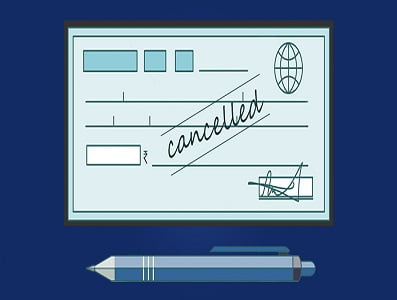
One thing that the year 2020 has reminded us again is life is uncertain. This pandemic has slowed down the economic rate globally. Therefore, it is now necessary to come up with a business recovery plan to get things back on track.
Business Continuity Management (BCM) is an advanced planning procedure and preparation for an organization to deal with unpredictable potential threats. Besides prevention, the objective is to run ongoing operations and functions before and during the execution of threat or disaster recovery. BCM is a proactive plan to defeat risks associated with disruption of business operations.
BCM vs. Disaster Recovery
Table of Contents
- 1 BCM vs. Disaster Recovery
- 2 Significant Steps to Make Effective Business Continuity Plan
- 2.1 Step 1: Identify Objectives and Top-Priorities
- 2.2 Step 2: Prepare for the Emergency Concerns
- 2.3 Step 3: Determine a Risk Assessment and BIA (Business Impact Analysis)
- 2.4 Step 4: Creation of Robust Disaster Recovery Plan
- 2.5 Step 5: Make firm decisions, and estimates for proper Financial Access –
- 2.6 Step 6: Test and Update your plan regularly –
- 2.7 Step 7: Security and Safety Protocols under Recovery Planning –
Many people consider BCM and Disaster recovery as synonyms, but they are not. There is a fine line of difference between both terms. BCM deals with business continuity in terms of relocation and functions. In contrast, the other term Disaster Recovery deals with the recovery of resources and systems (basically a technical recovery). Disaster Recovery covers the plans to recover sites, operations, functions, and applications. A BCM, on the other hand, can have numerous plans for Disaster Recovery.
Also Read: Tips For Demand Planning For A Retail Business
Significant Steps to Make Effective Business Continuity Plan
Creating a business continuity plan is not a cup of tea, but it is a crucial piece of running a flexible business. Therefore, it is significant for the BCM team and the rest of the staff to attentively focus on all significant steps to make an effective Business Continuity Plan for the business:
Step 1: Identify Objectives and Top-Priorities
The initial and primary step of the effective business recovery plan is to list down the priorities and objectives that will conclude your business’s continuity. With the assistance of these aspects, you can analyze the lasting potential of your business without assets, possible alternatives if you are unable to access the facilities, require changes to maintain significant operations during normal conditions and even consider circumstances that might disrupt the business. On the other hand, you must consider the points that every business is different, so you will need to determine the objectives as well for getting effective outcomes.
Also Read: How To Run A Successful Retail Business?
Step 2: Prepare for the Emergency Concerns
Moving forward to the next step of an effective Business Continuity Plan is to be preparing for the emergent concerns you have listed. The primary objective of this planning is for operational threats, the fulfillment of obligations in emergent situations, test the plans, and consider the requirement of documentation. Besides, you must designate a cross-functional leader to keep things normal and make quick and fruitful decisions.
Step 3: Determine a Risk Assessment and BIA (Business Impact Analysis)
Under this step, you have to assess the potential risks to your business and then, with proper research and analysis, be prepared for defense. Now, Communicate with the team to explore different ideas to sustain if you have to modify, reduce, and even eliminate essential functions or services from your business. Besides, be sure to estimate and document the asset impact, identified threats, and mitigate controls like backups.
Also Read: Reformation Of The Indian Retail Market: Technology Is The Future
Step 4: Creation of Robust Disaster Recovery Plan
The disaster recovery plan is only a subdivision of BCM (Business Continuity Management), but it is important to manage operations and functions during a disaster effectively. For framing an effective Business Continuity Plan, you have to determine:
- Complete inventory management and continuity supply for core functions and operations during disaster concerns.
- Allocate responsibilities and authority to key aspirants for order fulfillment and shipping deadlines if a crisis hits the business.
- Creation of a strong Communication Plan to maintain a smooth workflow during the crisis. Well, Customers demand empathy and transparency, so an effective communication plan and best support team is required.
- Create a robust functionality for e-commerce platforms by arranging strong cybersecurity and backup modes of sensitive information and business data.
Step 5: Make firm decisions, and estimates for proper Financial Access –
Finance is one of the major and life-giving parts of a Disaster Recovery Plan for the business, so you must give proper concentration on financial options during and after the disaster hit. This uncertain disaster might harshly affect the premises, vehicles, and even employees as well. In such a situation, ensure the existence of a company’s insurance protocols and connect with banks, financial agents, or institutions for business loans, personal loans, and even many others.
Also Read: How WhatsApp Business Can Help Small Businesses?
Step 6: Test and Update your plan regularly –
After creating a strong recovery plan, you don’t keep it in a safe treasure box for usage in an emergent situation. Instead, you have to start testing it for analyzing its outcomes and even make changes if improvements are needed in any part of the planning. In this way, you can analyze how your plan will run and what will be the outcomes you gain from it, such as back-ups, communication strategies, RTO objectives, contact information, and even so forth. Even testing will assist you in identifying the weakness or any missing aspect as well.
Step 7: Security and Safety Protocols under Recovery Planning –
Lastly, effective and robust business continuity and disaster recovery plans require the planning of strong safety protocols to smoothly handle the disaster. You have to keep health resources, emergency first-aid kits, and several other medical or security options in your inventory and even inspect them every month. Besides, as we discussed earlier, you have to keep an eye on financial access during a disaster and stay connected with financial institutions and agents for emergent business loans and so on.
Also Read: What are the best accounting practices for small businesses?
Recapitulation On the whole, nothing ever remains certain, therefore being fully aware and making an effective business continuity or disaster recovery plan of your stage of risk. As a result, a well-created BCP (Business Continuity Plan) will help you to take carefree and restful sleep at night. Once each personnel of your company is trained to implement and run the plan, you will get actual peace of mind. By knowing that if disaster strikes, we will not lose everything because we work with a valuable idea of Business Continuity and Disaster Recovery Management.






